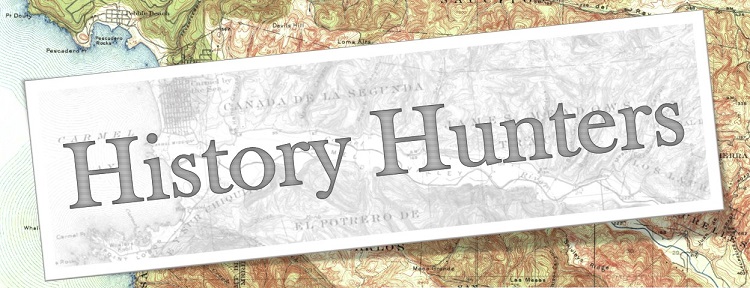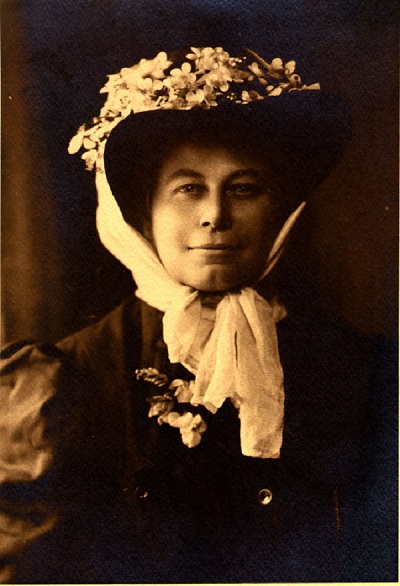
Today is  Taxonomist Appreciation Day, an unofficial holiday which draws awareness to the incredibly important but often overlooked field of taxonomy. Taxonomists work to name, classify, and describe species, sorting organisms into groups based on shared traits and evolutionary history. Here at the CNDDB, we couldn’t do the work we do without taxonomists researching animal and plant families, writing descriptions of newly-discovered species, and reevaluating the work of past taxonomists to incorporate new data and methods. These behind-the-scenes efforts build a strong foundation for all species-based biodiversity conservation.
Taxonomist Appreciation Day, an unofficial holiday which draws awareness to the incredibly important but often overlooked field of taxonomy. Taxonomists work to name, classify, and describe species, sorting organisms into groups based on shared traits and evolutionary history. Here at the CNDDB, we couldn’t do the work we do without taxonomists researching animal and plant families, writing descriptions of newly-discovered species, and reevaluating the work of past taxonomists to incorporate new data and methods. These behind-the-scenes efforts build a strong foundation for all species-based biodiversity conservation.
Many taxonomists over the past 150 years have had their hand in cataloguing and defining the species that make up California’s diverse flora and fauna. Today we’d like to highlight one taxonomist in particular: Alice Eastwood.

California Academy of Sciences, via  Online Archive of California
Online Archive of California
 Alice Eastwood (1859-1953) was a self-taught botanist who worked her way up to becoming the herbarium curator for the California Academy of Sciences from 1894-1949. When the 1906 earthquake hit San Francisco, she risked her life to rescue the academy’s botanical type specimens, protecting them from earthquake damage and the subsequent fires ravaging the city, even as she lost her home and personal possessions. After the earthquake, she worked to rebuild the herbarium’s collections, going out on numerous collecting trips throughout the Western US and trading duplicate specimens with other herbaria until the herbarium’s collections were three times as large as they had been before.
Alice Eastwood (1859-1953) was a self-taught botanist who worked her way up to becoming the herbarium curator for the California Academy of Sciences from 1894-1949. When the 1906 earthquake hit San Francisco, she risked her life to rescue the academy’s botanical type specimens, protecting them from earthquake damage and the subsequent fires ravaging the city, even as she lost her home and personal possessions. After the earthquake, she worked to rebuild the herbarium’s collections, going out on numerous collecting trips throughout the Western US and trading duplicate specimens with other herbaria until the herbarium’s collections were three times as large as they had been before.
Without Alice Eastwood’s tireless work, much of our knowledge of California’s flora would have been lost forever. She published over 300 scientific articles, described 395 plant species, and founded the journal Leaflets of Western Botany with her friend and successor John Thomas Howell. She was especially interested in studying the Arctostaphylos, Castilleja, and Lupinus genera, all of which are well-represented in the California flora.
Alice Eastwood’s contributions to California botany are all over the place if you know where to look, and she is immortalized by the many taxa bearing her name. Two plant genera are named after her—Aliciella and Eastwoodia—as well as 17 species. Seven of these are CNPS-listed rare plants tracked by the CNDDB: Aliciella ripleyi (Ripley’s aliciella), Aliciella trilodon (Coyote gilia), Arctostaphylos crustacea ssp. eastwoodiana (Eastwood’s brittle-leaf manzanita), Delphinium parryi ssp. eastwoodiae (Eastwood’s larkspur), Eriogonum eastwoodianum (Eastwood’s buckwheat), Fritillaria eastwoodiae (Butte County fritillary), and Sedum laxum ssp. eastwoodiae (Red Mountain stonecrop). If you come across one of these special plants honored to bear her name, take a moment to remember Alice Eastwood, and then fill out an Online Field Survey Form to tell us about your discovery. It’s what she would have done.